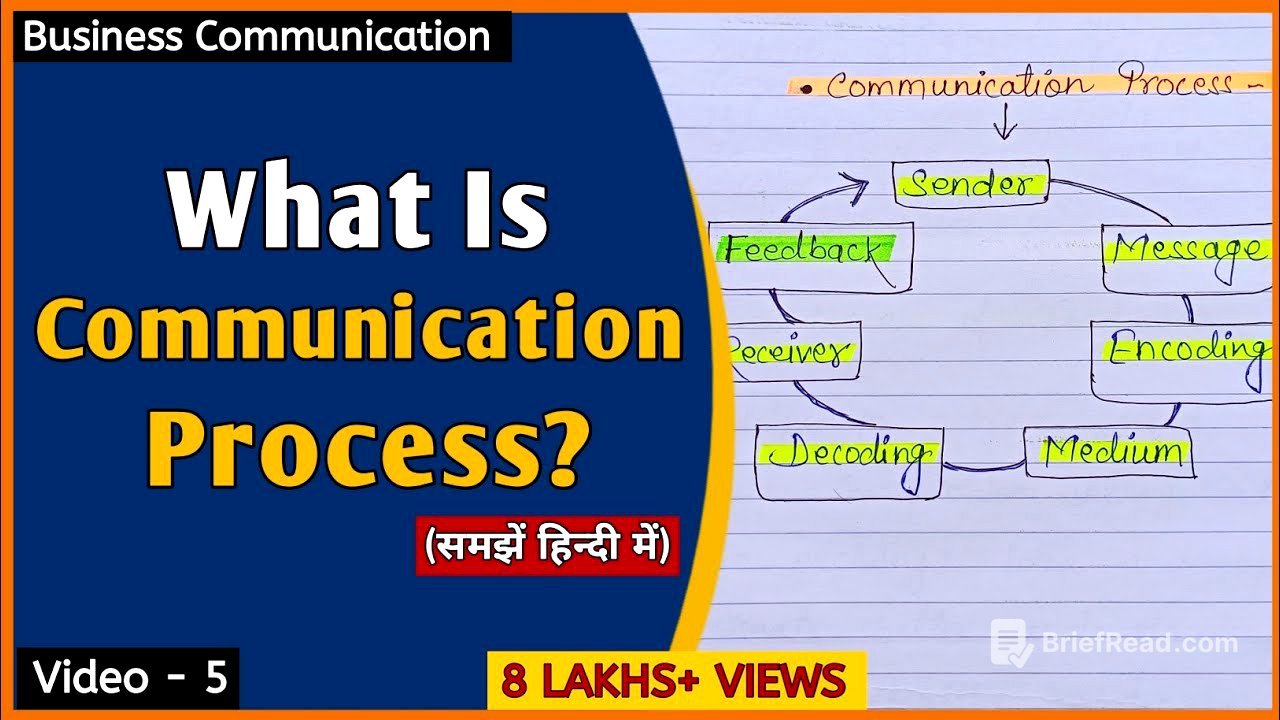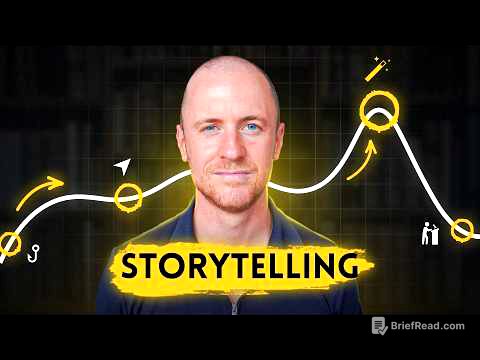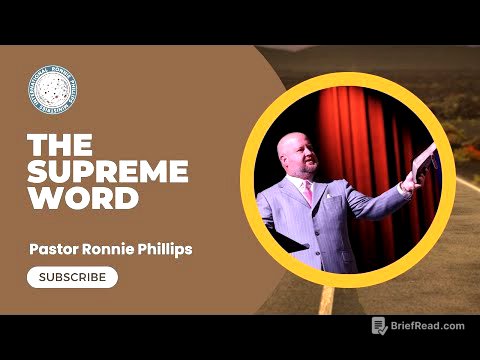TLDR;
This video explains the communication process, which is essential for effective business operations. It details the steps involved, from the sender initiating the message to the receiver providing feedback, and highlights the importance of each element in ensuring clear and successful communication. The video emphasizes that effective communication is crucial for achieving business goals and maintaining good relationships.
- Communication process involves actions and tips to successfully complete communication.
- Key elements include sender, message, encoding, medium, decoding, receiver, and feedback.
- Feedback is crucial for completing the communication process.
Introduction to Business Communication [0:00]
The video introduces the concept of business communication as a vital process for running a business effectively. It highlights the importance of conveying one's point to others and emphasizes that effective communication is essential for achieving business goals and profits. The video aims to explain the communication process, detailing how it starts and is completed.
Definition of Communication Process [1:12]
The communication process involves actions and tips to successfully complete communication. It includes multiple components and subscriptions, with various parties involved in sending and receiving information. The process includes sending a message in a pure form, converting it into an understandable language, and appointing a receiver. It's a question-and-answer process that uses various media, such as speaking, video calls, writing, and email, along with body language.
Sender: The Initiator of Communication [3:35]
The first element of the communication process is the sender, who is the source of the message. The sender, whether a speaker, writer, or actor, initiates the communication and conveys the message. The sender selects the appropriate medium to deliver the message effectively, playing a crucial role in the communication process.
Message: The Subject Matter of Communication [4:44]
The message is the main subject of communication, consisting of thoughts, opinions, research, and information that the sender wants to convey. This message can be an order, direction, or any kind of information, and it can be delivered in written or oral form. The message is the core content that the sender aims to transmit to the receiver.
Encoding: Converting Message into Understandable Form [5:36]
Encoding involves converting the message into words, symbols, or signs that the receiver can understand. This process ensures that the message is transformed into a form that is easily comprehensible by the recipient. Encoding is essential for making the message clear and accessible to the receiver.
Medium: The Channel of Communication [6:30]
The medium is the channel through which the message is sent to the receiver. This can include face-to-face conversations, telephone calls, letters, the internet, or any other means of communication. The medium ensures that the message reaches the intended recipient, whether in written or spoken form.
Decoding: Understanding the Message [7:37]
Decoding is performed by the receiver and involves understanding the message in their own language. It means interpreting the message based on one's knowledge and experience, ensuring that the message is understood as the sender intended. This process is crucial for accurate comprehension of the communicated information.
Receiver: The Recipient of the Message [8:27]
The receiver is the person who receives the message. The receiver must receive the message and make an effort to understand it properly. Both the sender and the receiver are important in the communication process.
Feedback: Completing the Communication Loop [9:09]
Feedback is the final and important element of the communication process. It is required to complete the process of communication. Without feedback from the receiver, the communication process is incomplete. Feedback confirms that the message has been received and understood, and it allows the receiver to provide a response or reaction to the message.
Diagram of Communication Process [10:42]
The communication process happens serially, starting with the sender, then the message, encoding, medium, decoding, and finally the receiver who gives feedback. This feedback reaches the sender, completing the entire communication loop. The video suggests explaining the communication process by using a diagram to illustrate the flow of information.









